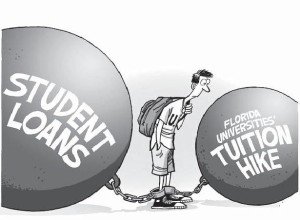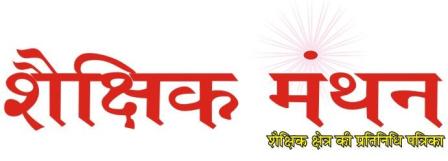The Education Deficit
 The steady deterioration in
The steady deterioration in
India’s economic growth indicators
should not surprise anyone.
But what is surprising is the complete
lack of understanding of most
fundamental growth drivers by the
political leadership and those entrusted
with planning for India’s
future, and the magnitude of effort
and resources required to provide
a growth thrust to the (currently)
1.25 billion inhabitants of the nation.
Beyond the fiscal deficits,
lending rates and taxation slabs,
India’s future is and would continue
to be determined by how the
nation grapples with rising deficits
in 12 major areas that consist of
education, healthcare, water, energy,
food, land, housing, sanitation,
non-industrial waste handing,
mass rapid transport system for its
rapidly-growing millionplus population
cities, intracountry transport,
and internal security
With the 21st-century world
widely claimed to be a ‘knowledge’
— and, increasingly, ‘technology’
— driven one, a sharp focus on
education — primary, secondary,
higher and vocational — would
have been one of the top priorities
of all governments. Yet, the gap in
absolute terms has continued to
increase since 1951, and has actually
increased the most since 1991.
India had about 12.1 million primary
education seats in 1951
against the requirement of about
45 million (to achieve 100% school
enrolment).
In 1991, the number of seats
had increased to about 44 million,
but the required capacity had shot
up to 116 million, i.e., a deficit of
almost 72 million. In 2001, the deficit
increased to about 74 million. In
2011, the government’s own data
shows a deficit of about 60 million
even though many rural (and urban)
schools effectively exist only
on paper. The seat gap has hardly
budged in absolute numbers — at
around 60 million seats — since
1981 at middle and high-school levels.
Using CBSE norms, this translates
to a requirement of about additional
7.75 million teachers, 900
million sq ft of additional building
space, about $250 billion in additional
capital expenditure and
about $75 billion in annual operating
budget by 2021.
The situation is bleaker
when it comes to higher education.
At about 12% (about 17 million
enrolment), India currently has
amongst the lowest Gross Enrolment
Ratios (GER) not only compared
to the developed nations but
even the major developing ones
(though the government has recently
tried to change its own definition
of GER and claims that it is
closer to 18%).
In a knowledge- and specific
skills-driven world, India should be
aspiring to come closer to 40%, but
even if it were to first target a GER
of 30% by 2021, an additional 36
million seats would have to be created.
Put another way, India will
have to add more than 200% of its
entire current higher education capacity,
at about $350 billion in capital
expenditure, in the next eight
years!
The bleakest situation of all
relates to skills development and
vocational education infrastructure.
Against a working-age population
of over 550 million in 2011,
the total (annual) skills development
capacity not considering any
qualitative aspect at all stood at
less than 4.3 million. Worse, India
stands at a critical point when seen
in the context of the last 4,000 years.
Perhaps for the first time since the
Vedic period, India would see a rapid
dismantling of the caste system and,
with that, the caste-determined vocation
system. On the positive side
of this change, it is absolutely desirable
that the children of the
leather tanners, cobblers, carpenters,
bricklayers, etc, should be
going to school and many, if not
all, will get this opportunity.
The only downside is that
this decade and the next may also
see a complete breakdown of the
‘apprentice’ system, leaving the
nation with hundreds of millions
of semi-literate and unskilled
people unable to make a living
even as daily-wage workers and
self-employed microentrepreneurs.
India needs to spend over $100 billion
in capital expenditure alone in
the next eight years, and create an
that gap are huge; technology
must provide the solutions
additional six million trainers if even
65% of the 725 million-plus in the
workforce by then have to be provided
with some value-creating
vocational skills. With the current
annual spending, both public and
private, on education (all sectors)
of less than $100 billion, and of
which over 80% is spent on just
the operating expenses alone, the
current annual deficit between the
required capital expenditure for
additional capacity creation and
the actual available funding may
be as much as $80 billion.
Since it is impossible to generate
this quantum of resources,
India has to think beyond the conventional
and look aggressively at
technology and mass electronic
communication-based solutions
that can mitigate the need for physical
schools, colleges and universities,
and the need for teachers and
even trainers. The consequences
of not doing so are too dire to even
think of.
